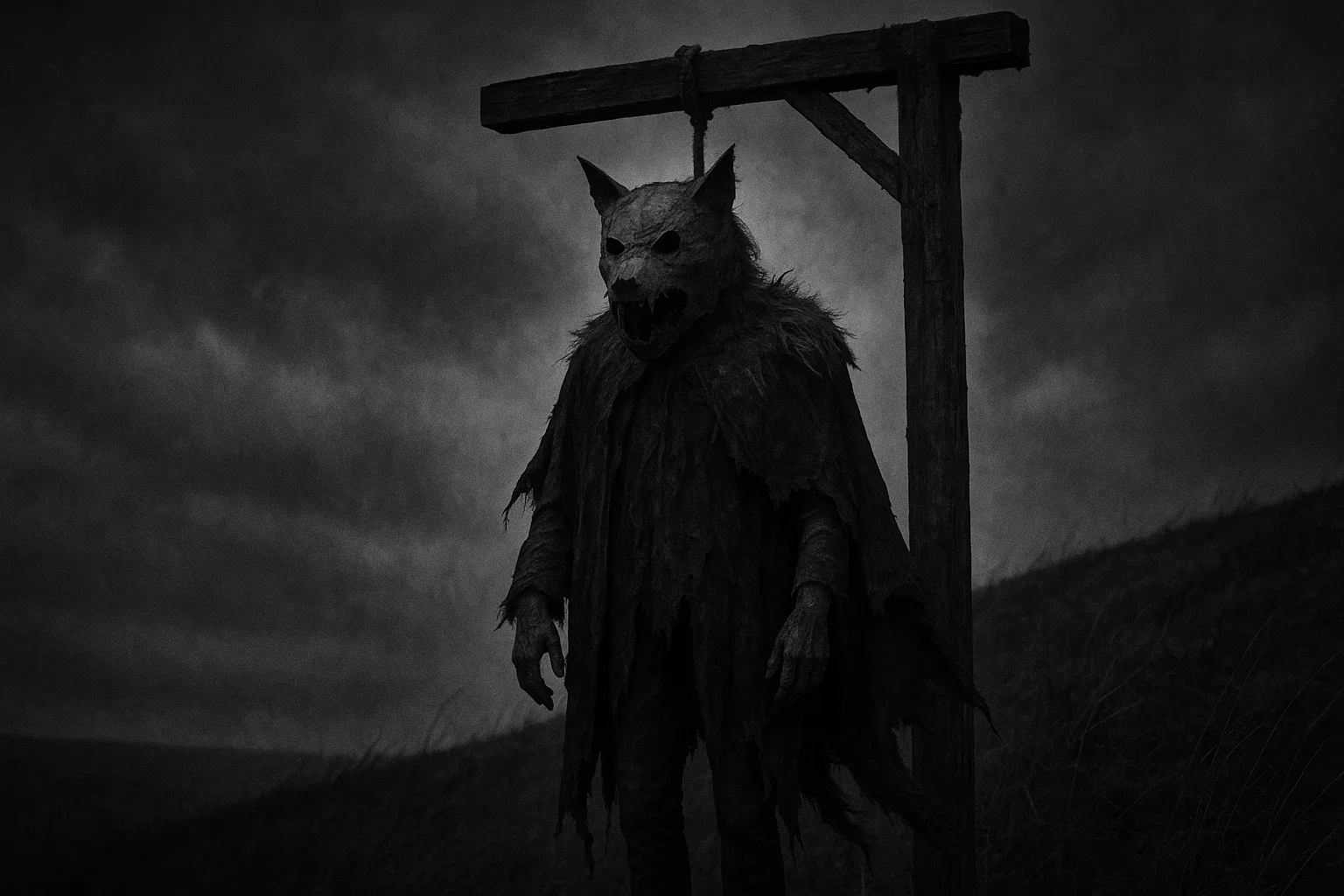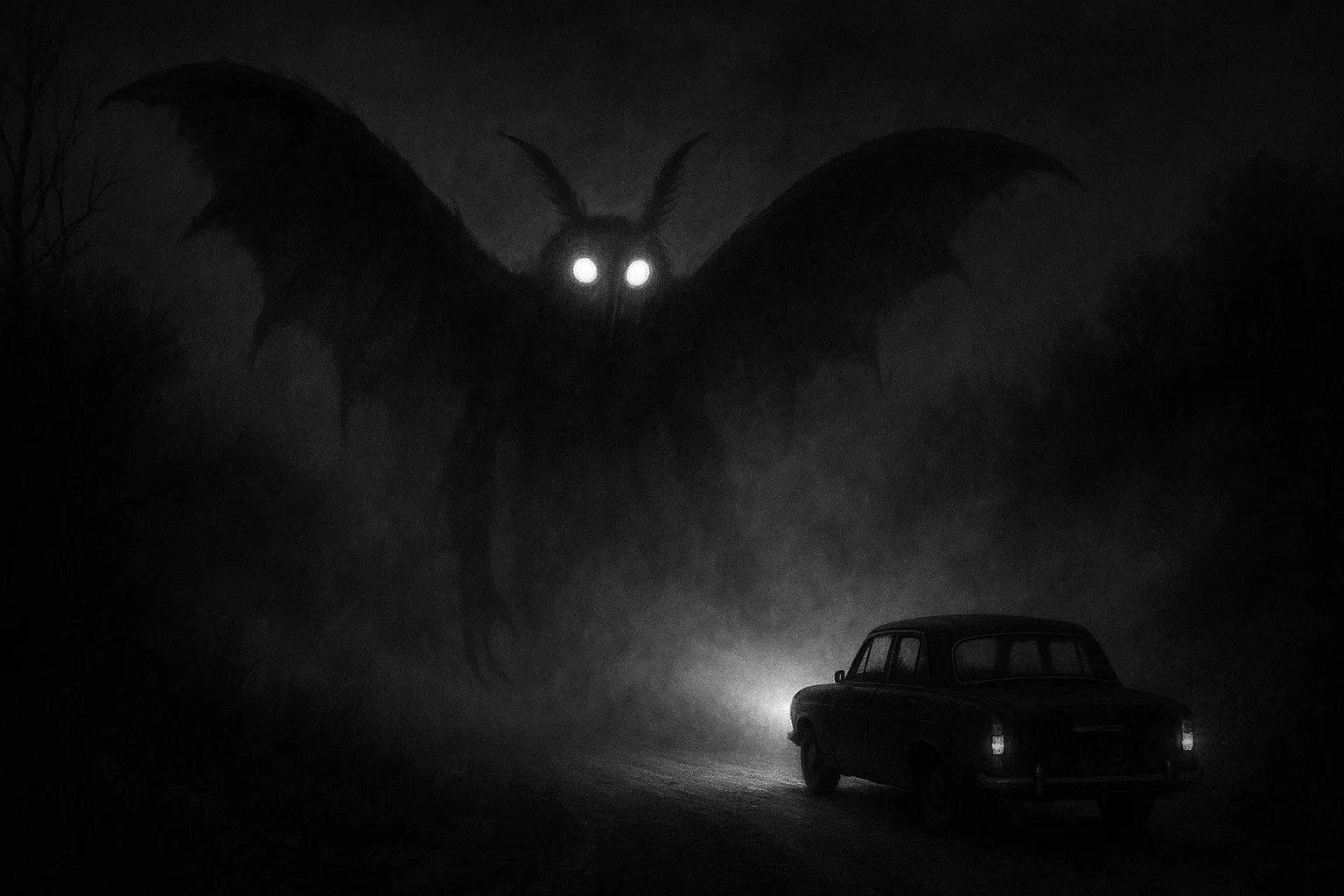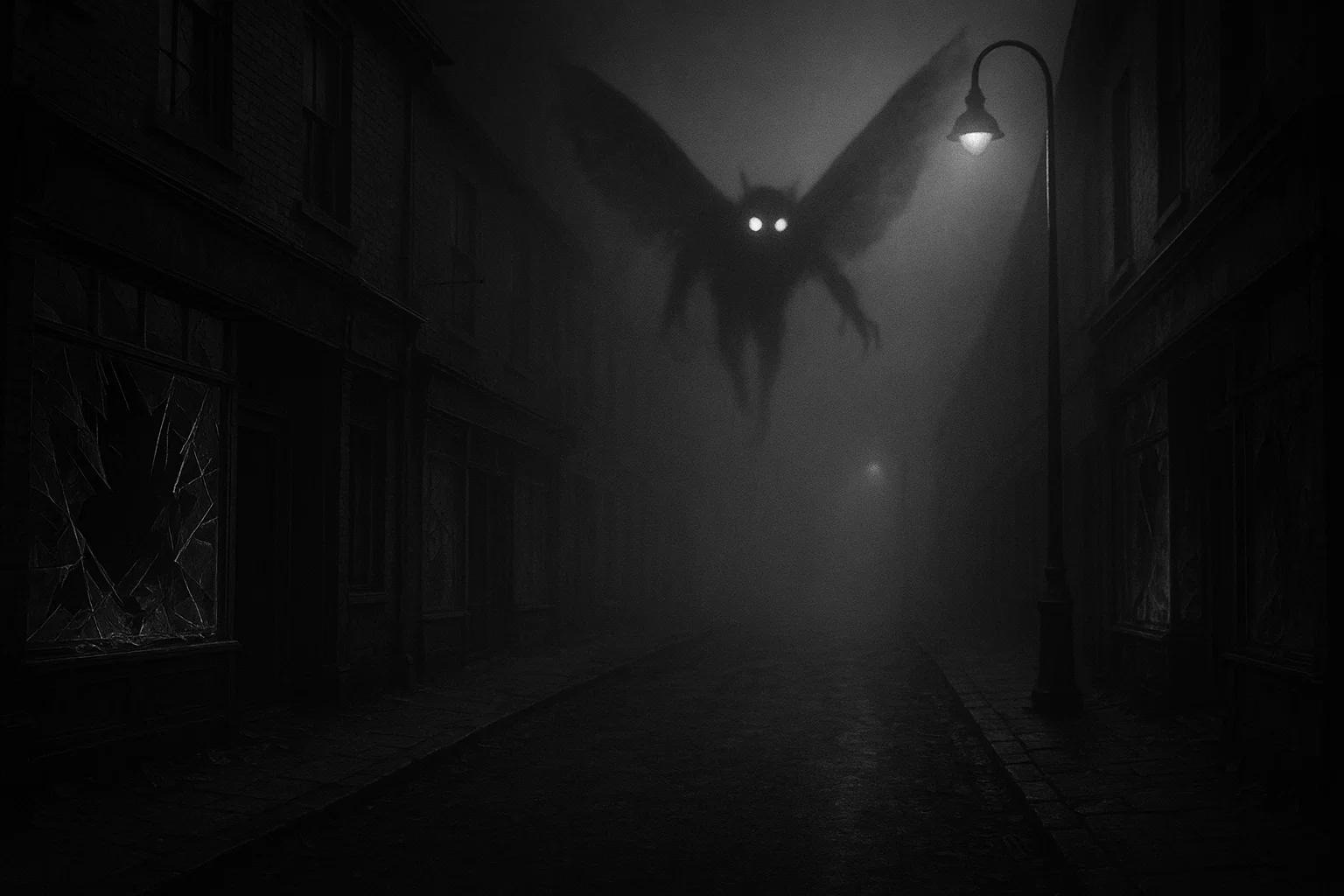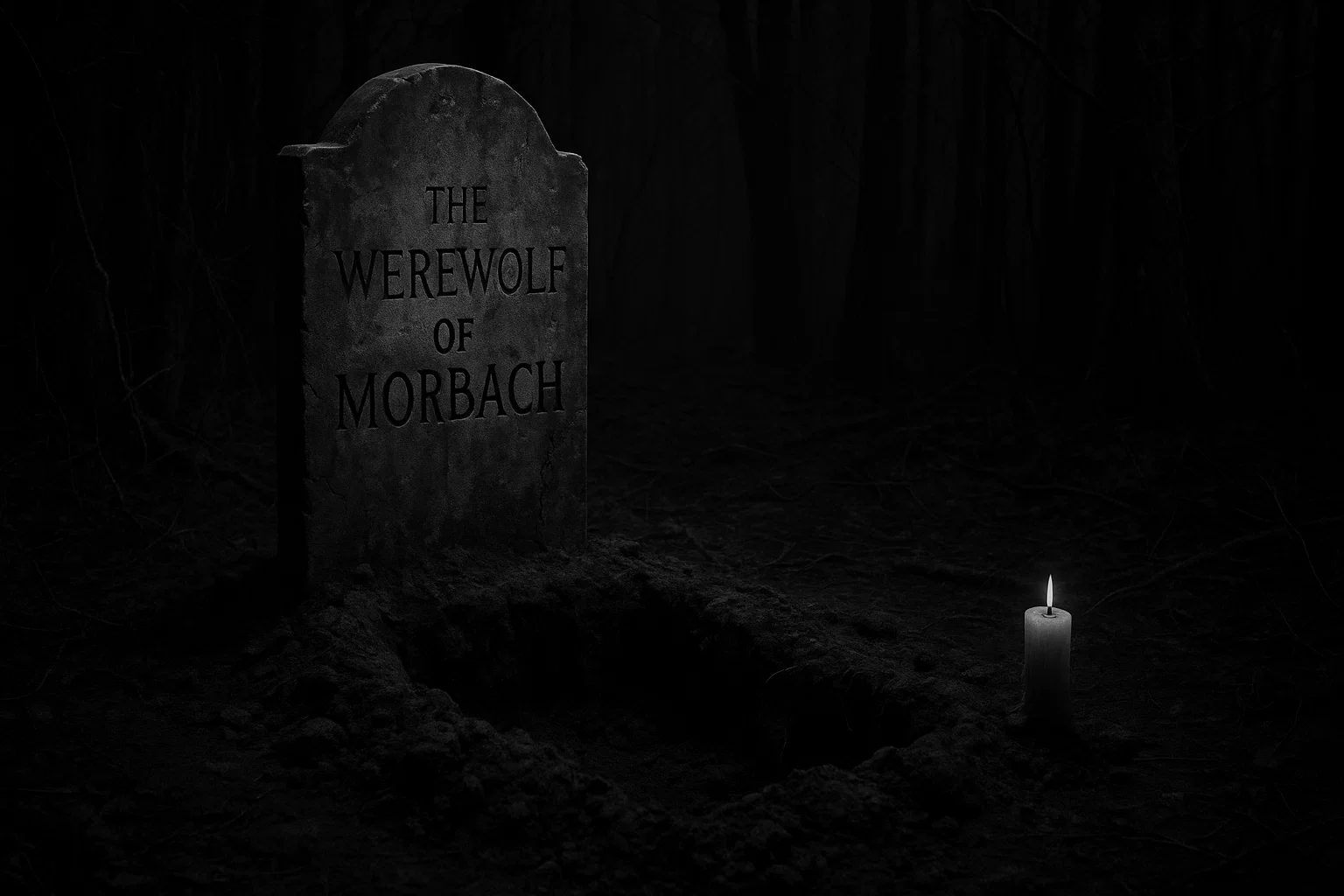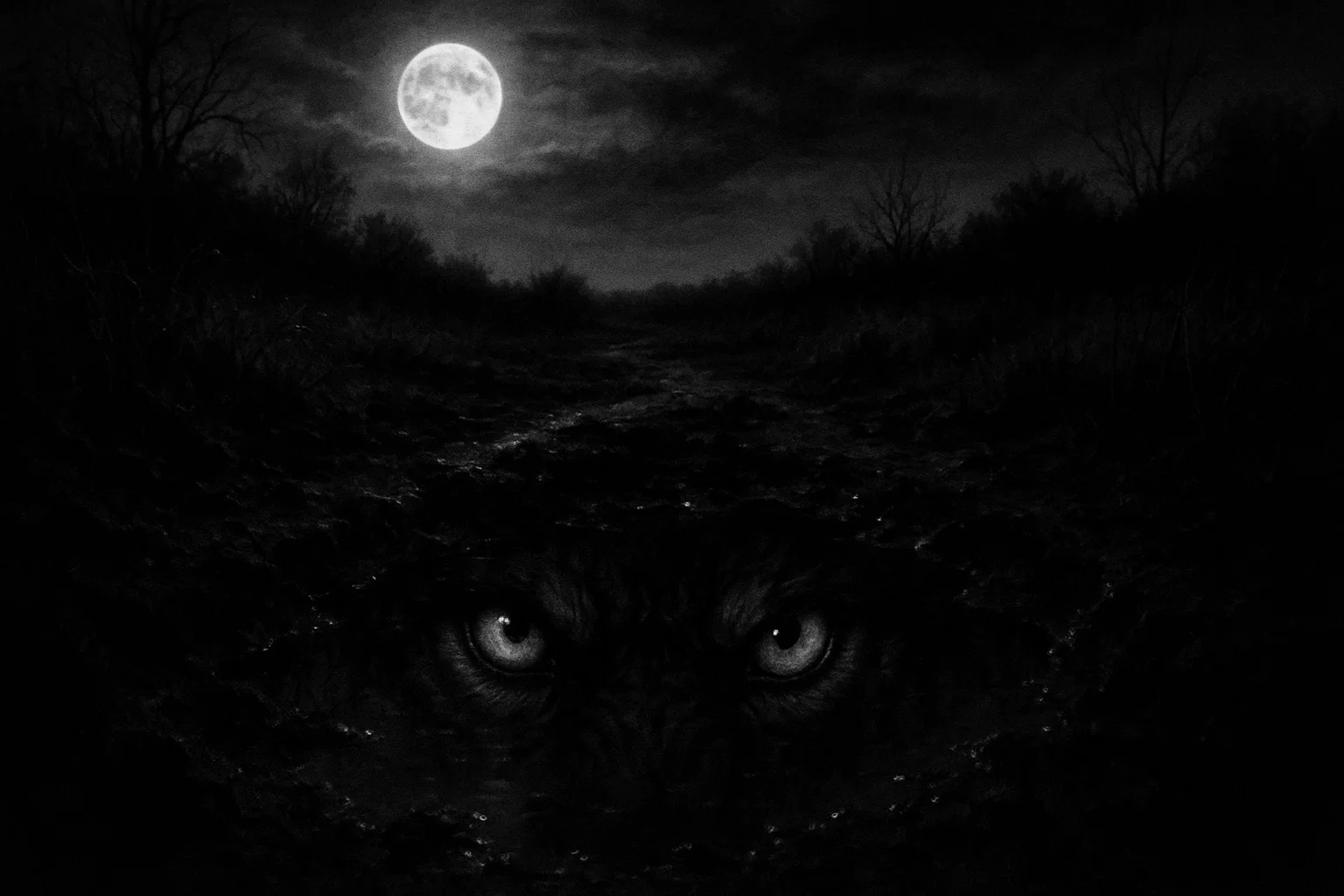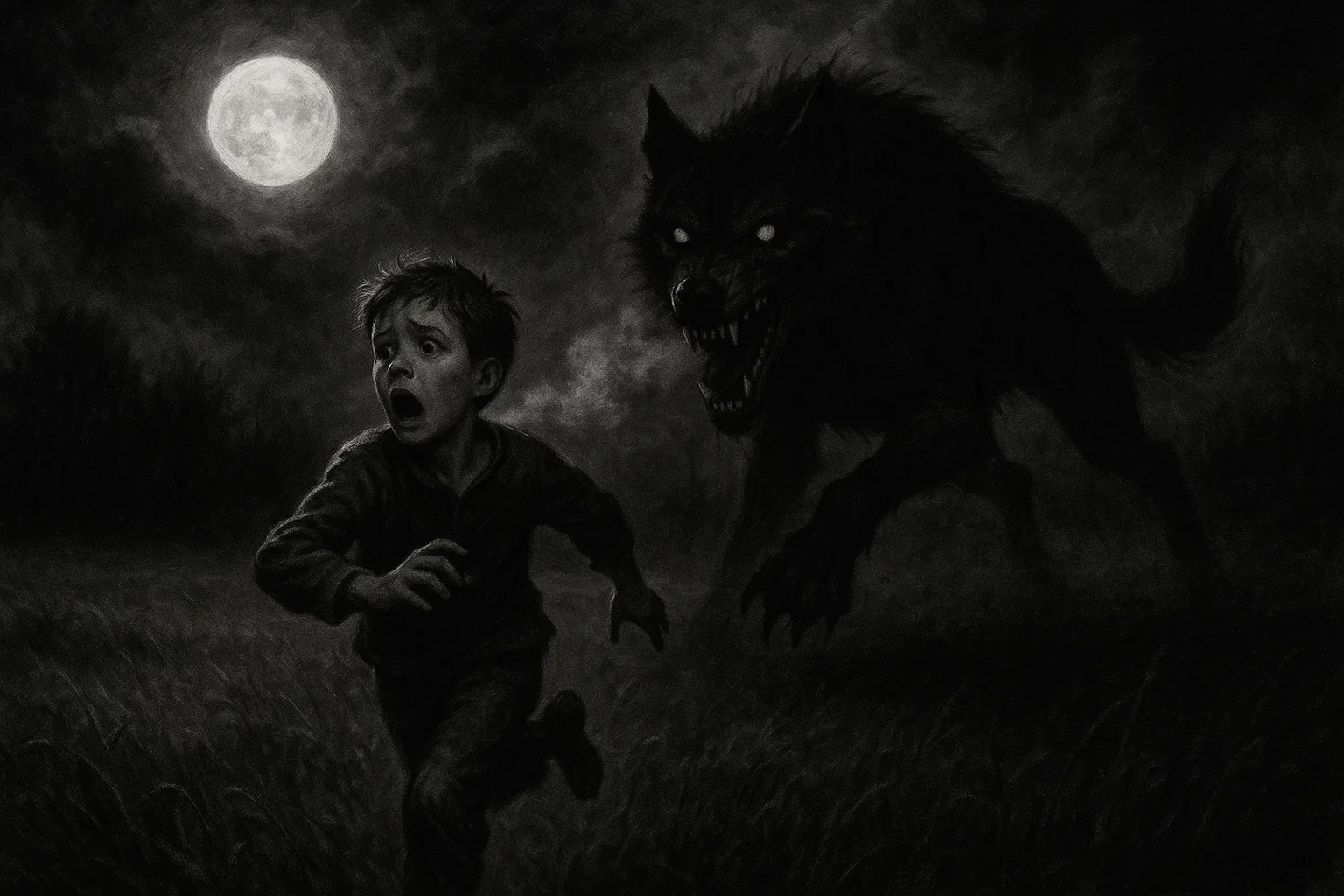The Werewolf of Eschenbach case, also known as the Werewolf of Ansbach, is a chilling episode from 1685 in the Principality of Ansbach, near Eschenbach, Bavaria, Germany.
A wolf, blamed for slaughtering livestock and killing children, was believed to embody the malevolent spirit of Michael Leicht, the deceased Burgomaster of Ansbach.
Historical accounts detail how the community trapped the beast in a pit, killed it, and crafted a human-like effigy to symbolize Leicht’s posthumous punishment, reflecting the era’s deep-seated fears of lycanthropy.
Documented in a 1685 engraving and sparse records, this case reveals how 17th-century Europeans intertwined superstition with real threats, creating a haunting narrative that endures in werewolf folklore.
Table of Contents
Overview
| Aspect | Details |
|---|---|
| Case Name | Werewolf of Eschenbach (also Werewolf of Ansbach) |
| Location | Principality of Ansbach, near Eschenbach, Bavaria, Germany |
| Year | 1685 |
| Suspected Identity | Michael Leicht, former Burgomaster of Ansbach, died c. 1682–1683; believed to possess the wolf posthumously |
| Occupation | Leicht was a Burgomaster, overseeing local governance and justice |
| Key Events | – Wolf attacks livestock, March–April 1685 – Child killings escalate, April–June 1685 – Wolf trapped in Wolfsgrube (trapping pit), July 1685 – Effigy of Leicht, dressed as a man, hanged on gibbet, 15 July 1685 |
| Victims | At least 5–7 children (e.g., Hans, Anna, Wilhelm); numerous livestock (sheep, cattle, goats) |
| Modus Operandi | Wolf mauled livestock and children in forests and fields, leaving mangled remains |
| Outcome | Wolf killed; no trial due to Leicht’s death; symbolic justice via effigy |
| Physical Evidence | Wolf’s mutilated carcass, child remains with bite marks, livestock carcasses with claw gashes |
Who Was the Werewolf of Eschenbach?
The Werewolf of Eschenbach was believed to be the disembodied spirit of Michael Leicht, the former Burgomaster of Ansbach, who died around 1682–1683.
As Burgomaster, Leicht was a prominent figure, wielding authority over Ansbach’s governance, taxation, and justice. Likely in his 50s at death, he was a respected yet polarizing leader, with rumors suggesting he clashed with local merchants and farmers over land disputes or harsh penalties.
His death—possibly from illness or accident—was shrouded in whispers of discontent, with some villagers believing he had cursed the community or made a diabolical pact to return as a vengeful beast.
Leicht’s posthumous vilification as a wilkołak (werewolf in German and Polish folklore) reflects the 17th-century tendency to blame unexplained tragedies on supernatural forces, especially targeting deceased authority figures.
No records detail his appearance or personal life, but as a Burgomaster, he likely lived in Ansbach’s town center, with a modest household. The community’s readiness to attribute the wolf’s attacks to Leicht suggests lingering resentments, possibly tied to his governance or a mysterious death that fueled spectral rumors.
This case underscores how lycanthropy beliefs could transform a once-respected leader into a monstrous legend.
You May Also Like: Amon: The Wolf-Headed Marquis of Hell Tied to Ancient Gods
Werewolf of Eschenbach’s Story
In March 1685, the rural hamlets surrounding Eschenbach and Ansbach were plunged into palpable terror as a wolf began ravaging livestock. Farmers found sheep, cattle, and goats slaughtered in their pastures, their carcasses mangled with gaping wounds, claw gashes, and torn entrails strewn across the fields.
By April, the attacks escalated to a horrific degree, targeting children in the dense forests and meadows near Eschenbach.
The savage brutality—bodies ripped asunder and partially devoured—convinced villagers that this was no ordinary predator but a wilkołak, a werewolf embodying a malevolent spirit.
Crimes and Victims
The first recorded child attack occurred on 10 April 1685, when Hans, an 8-year-old boy, vanished while tending goats near a stream outside Eschenbach.
His ghastly remains, discovered by shepherd Georg Müller on 12 April, were a chilling sight: his skull crushed, chest torn open, and organs missing, with bite marks marring his limbs.
On 3 May, Anna, a 10-year-old girl, disappeared while gathering berries in a forest near Ansbach. Her body, found in a blood-soaked ravine on 5 May, was eviscerated, with claw-like gashes across her torso and her face disfigured by gnaw marks.
In early June, Wilhelm, a 7-year-old boy, was killed while playing near a meadow; his throat ripped and limbs severed, his remains were discovered by farmer Klaus Schmidt on 8 June.
At least two other children, unnamed in records, were attacked between late May and July, their bloodied clothing and scattered bones found near forest paths.
Estimates suggest 5–7 child victims, though exact numbers are obscured by sparse documentation. Livestock losses were extensive: farmer Hans Bauer reported 20 sheep butchered in March, while merchant Johann Weber lost 15 cattle by April, their abdomens slashed and entrails exposed.
The relentless carnage—children torn apart, animals disemboweled—created a climate of dread, with villagers fearing to venture beyond their homes.
Accusations and Community Response
The community, steeped in lycanthropy folklore, began linking the attacks to Michael Leicht, the former Burgomaster who died around 1682–1683. Leicht’s death was shrouded in mystery, with rumors of a diabolical curse or unjust rule fueling speculation.
A tavern keeper, Johann Weber, reported hearing spectral howls at night, describing them as unearthly shrieks that chilled the soul.
Farmer Klaus Schmidt claimed to have seen a shadowy figure—half-man, half-beast—fleeing a meadow on 7 June, its eyes glinting in the moonlight. These terrifying accounts, likely amplified by collective hysteria, solidified the belief that Leicht’s vengeful spirit had possessed the wolf.
Villagers responded with desperate measures. Parents barred children indoors, and armed patrols—led by hunters like Peter Klein—scoured the countryside, wielding muskets, pitchforks, and blessed silver to repel the supernatural beast.
The local priest, Father Matthias, held nightly vigils, ringing church bells to ward off evil and preaching against demonic forces. On 20 June, magistrate Friedrich von Hagen convened a council, including clergy and hunters, to organize a relentless hunt.
They employed a traditional Bavarian method: a Wolfsgrube, a 4-meter-deep pit lined with sharp stakes, baited with a live rooster whose crowing lured predators.
You May Also Like: Is Detroit Cursed by the Nain Rouge?
The Hunt and Capture
The hunt culminated on 12 July 1685, when the wolf, drawn by the rooster’s cries, fell into the Wolfsgrube near Eschenbach’s forest. Trapped in the muddy depths, it snarled ferociously, its matted fur slick with blood.
Hunters, led by Klein, killed it with spears and musket fire, its piercing cries echoing through the night. The bloodied carcass, a massive gray wolf weighing over 50 kilograms, was dragged to Ansbach, a triumphant yet macabre procession witnessed by hundreds.
The community’s relief was tempered by lingering dread, as they believed Leicht’s spirit might persist.
Post-Capture Rituals
On 13 July, the wolf’s mutilated corpse was paraded through Ansbach’s cobblestone streets, its gaping wounds and snarling jaws displayed to quell fears.
Hunters severed its muzzle, a ritual to prevent posthumous attacks, and skinned it, revealing sinewy flesh beneath. In a ghoulish act, the carcass was dressed as a human: a cardboard mask mimicking Leicht’s face, complete with hollow eyes, was affixed, along with a tattered wig and a threadbare cloak.
This effigy, a grotesque caricature, was crafted to symbolize Leicht’s monstrous guilt. On 15 July, it was hoisted onto a gibbet on a hill overlooking Eschenbach, swaying in the wind as a grim warning to other supernatural threats.
Witnesses and Evidence
Witnesses bolstered the case:
- Georg Müller: Found Hans’s shattered remains, noting a fetid stench and claw marks.
- Klaus Schmidt: Discovered Wilhelm’s ripped body, describing fresh blood pooling nearby.
- Peter Klein: Saw the wolf’s gleaming eyes during a patrol, confirming its unnatural ferocity.
- Anna Weber, Johann’s wife, heard unholy howls near their tavern in May, linking them to Leicht’s curse.
Physical evidence included the wolf’s carcass, child remains with gnaw marks, and livestock disemboweled with savage precision. The Wolfsgrube’s success and the effigy’s creation were documented, cementing the community’s ritualistic response.
You May Also Like: The Lobizon Legend: Werewolf, Curse, or Cryptid?
Werewolf of Eschenbach’s Trial
No formal trial occurred, as Michael Leicht was deceased, and the wolf’s death on 12 July 1685 preempted legal proceedings. Instead, the community enacted symbolic justice through a series of ritualistic acts designed to purge the evil and restore order.
The process began with the wolf’s capture in the Wolfsgrube, a desperate triumph orchestrated by magistrate Friedrich von Hagen and hunter Peter Klein.
The frenzied killing—spears piercing the wolf’s flanks, musket balls shattering its skull—was a cathartic release for a terrified community.
Post-Capture Proceedings
On 13 July, the wolf’s mangled carcass was paraded through Ansbach, a gruesome spectacle that drew gasps and prayers. Villagers spat on the bloody remains, cursing Leicht’s damned soul.
The skinning process, performed by Klein, was grisly: the wolf’s pelt peeled away, revealing raw muscle and sinew, its jaws locked in a snarl. The severed muzzle was burned in a churchyard, sprinkled with holy water by Father Matthias to banish the spirit.
The creation of Leicht’s effigy was a deliberate act of retribution. On 14 July, artisans crafted a cardboard mask with hollow sockets and gaunt features, mimicking Leicht’s rumored appearance. A matted wig and ragged cloak were added, transforming the skinned corpse into a ghoulish figure.
On 15 July, the effigy was hoisted onto a gibbet on Eschenbach’s hill, a creaking scaffold overlooking the town. The hanging ritual was a public event, attended by hundreds who chanted prayers and hurled stones at the swaying figure.
Father Matthias led a solemn blessing, invoking divine protection against further demonic incursions. The effigy remained on display for weeks, its tattered form weathering rain and wind, a stark reminder of the community’s triumph over evil.
This ritualistic execution mirrored contemporary practices for witches and werewolves, where public punishment served to deter and cleanse.
Symbolic Justice
The absence of a trial was typical for cases involving deceased suspects, as seen in other lycanthropy accusations. The effigy’s creation served as a proxy execution, allowing the community to condemn Leicht without a living defendant.
The gibbet’s placement on a hill ensured visibility, reinforcing public order. The parading, skinning, and hanging were macabre rituals, blending justice with superstitious fervor.
No records suggest further investigation into Leicht’s life or death, indicating the community’s focus on symbolic closure rather than legal truth.
You May Also Like: The Last Ride at Midnight | Horror Story
Werewolf of Eschenbach vs Other Werewolves
The Werewolf of Eschenbach shares themes with other lycanthropy cases but is unique for its posthumous accusation and ritualistic justice:
| Case Name | Year | Location | Key Details | Comparison with Eschenbach |
|---|---|---|---|---|
| Peter Stumpp | 1589 | Bedburg, Germany | Devil pact, killed children; executed by breaking on wheel. | Child victims; Stumpp’s trial vs. Eschenbach’s effigy-based justice. |
| Gilles Garnier | 1573 | Dole, France | “Hermit”; ate children, demonic aid; burned at stake. | Cannibalism similar; Garnier’s trial vs. Eschenbach’s symbolic response. |
| Werewolves of Poligny | 1521 | Poligny, France | Three men ate children; burned at stake. | Multiple accused vs. Eschenbach’s single, deceased culprit; no trial. |
| Jean Grenier | 1603 | Bordeaux, France | Shepherd, child attacks; deemed insane, imprisoned. | Child victims; Grenier’s psychological focus vs. Eschenbach’s folklore-driven narrative. |
| Jacques Roulet | 1598 | Angers, France | Killed boy, confessed; deemed insane, not executed. | Confessions vs. Eschenbach’s lack of accused testimony; no trial. |
| Thiess of Kaltenbrun | 1692 | Livonia, Estonia | Fought devils as werewolf; whipped, not executed. | Lycanthropy claims; Thiess’s non-violent role vs. Eschenbach’s violent attacks. |
| Beast of Gévaudan | 1764–67 | Gévaudan, France | Wolf-like creature killed 100+; unresolved. | Panic similar; Gévaudan’s non-human culprit vs. Eschenbach’s human association. |
| Hans the Werewolf | 1582 | France | Attacked livestock; confessed, executed. | Livestock attacks; Hans’s trial vs. Eschenbach’s ritual justice. |
| Werewolf of Châlons | 1598 | Châlons, France | “Demon Tailor” lured children; burned at stake. | Child victims; Châlons’ luring vs. Eschenbach’s opportunistic attacks. |
| Manuel Blanco Romasanta | 1853 | Galicia, Spain | 13 murders, lycanthropy claim; life imprisonment. | Lycanthropy claims; Romasanta’s psychological trial vs. Eschenbach’s symbolic effigy. |
The Werewolf of Eschenbach aligns with Peter Stumpp and Gilles Garnier in targeting children and invoking lycanthropy. The collective terror and use of folklore to explain violence are recurring themes.
Eschenbach’s focus on a deceased suspect and effigy execution distinguish it from cases with living defendants, like Stumpp or Romasanta. The Beast of Gévaudan lacked a human culprit, unlike Eschenbach’s specific accusation against Leicht.
Was the Werewolf of Eschenbach a Real Werewolf?
The Werewolf of Eschenbach case is primarily documented through a 1685 German line engraving, which depicts the wolf trapped in a Wolfsgrube and Leicht’s effigy on a gibbet.
This engraving, likely circulated in Ansbach, is a key source, capturing the event’s ritualistic climax. Additional evidence includes oral traditions, possibly recorded in local chronicles, and a rumored 1685 poem, though its text is lost.
Jean Beauvoys de Chauvincourt’s 1599 Discourse on Lycanthropy provides context, arguing that lycanthropy was a demonic illusion or psychological affliction, influencing 17th-century beliefs.
A 1686 Ansbach pamphlet, mentioned in later histories, briefly describes the wolf’s attacks and the community’s response, lending historical weight.
The case’s authenticity as an event is robust: a wolf attacked livestock and children, was trapped, and killed, with Leicht’s effigy hanged.
However, the lycanthropic claim—that Leicht’s spirit possessed the wolf—is a product of superstitious fervor. Wolves were common in 17th-century Bavaria, often attacking humans during harsh winters or disease outbreaks.
The timing, post-Leicht’s death, likely fueled the wilkołak narrative, as communities attributed tragedies to malevolent spirits. The witch-hunt era, with up to 100,000 lycanthropy executions from the 14th to 17th centuries, shaped this belief, as seen in contemporary witch trials.
Modern analysis suggests the wolf was a natural predator, possibly rabid, explaining its frenzied attacks. Clinical lycanthropy, a psychiatric disorder, is irrelevant, as Leicht was deceased.
The effigy’s creation was a ritualistic act to appease fears, akin to posthumous punishments in witch trials. While the attacks and response are factual, the werewolf element is a cultural artifact, reflecting 17th-century anxieties rather than reality.
You May Also Like: Swiatek: Murder, Cannibalism, and a Wolf’s Curse
Conclusion
The Werewolf of Eschenbach case is a haunting tapestry of historical tragedy and superstitious belief.
The community’s response—trapping a wolf, parading its mangled remains, and hanging Michael Leicht’s effigy—captures the 17th-century struggle to rationalize inexplicable horrors through lycanthropy. Preserved in a 1685 engraving, this case reveals the primal fear and ritualistic justice of a bygone era.
While the wolf was a real threat, the belief in Leicht’s wilkołak spirit underscores the power of folklore to shape perceptions.
The Werewolf of Eschenbach endures as a compelling testament to humanity’s need to confront the unknown, blending gruesome reality with mythic dread in a narrative that continues to captivate.

